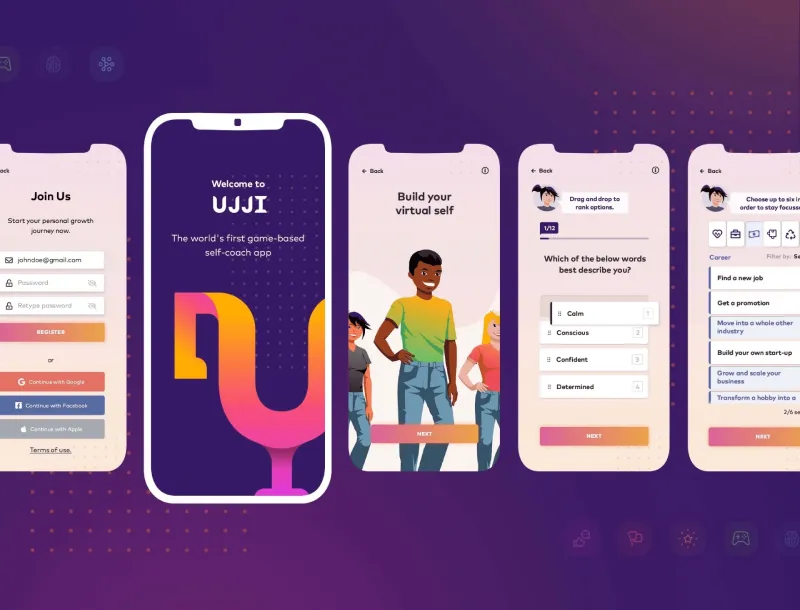
The relationship between user interface (UI) design and user experience (UX) is crucial in determining how students engage with digital learning materials in the rapidly changing field of educational technology. The cognitive load theory, which acknowledges that students have a limited working memory capacity, must be supported by careful interface design that promotes learning rather than impedes it.
Progressive Disclosure for User Engagement
Engaging EdTech design embraces progressive disclosure, introducing ideas and capabilities incrementally to prevent overwhelming users. Interfaces that begin with basic elements and gradually reveal more complex features as users build competence and confidence exemplify this approach. For example, a language-learning app might start with simple vocabulary drills using large, clear buttons with minimal distractions, then gradually introduce more intricate interaction patterns as users advance.
Visual Hierarchy and Typography
Creating a clear visual hierarchy in educational interfaces is vital as it guides students through the content in an organised, meaningful way. Typography plays a central role: headings should clearly denote different content sections and levels, while body text should be easily readable with adequate line height, contrast, and spacing. Colour psychology also becomes a powerful tool, with cool tones fostering calm, focused learning environments and warm hues highlighting key information.
Feedback Systems in EdTech UX
Feedback systems are an essential component of EdTech UX design. Prompt, constructive feedback reinforces learning objectives and sustains engagement. Feedback should be multimodal—combining visual, auditory, and sometimes tactile elements—to accommodate different learning styles. However, it must strike a delicate balance to be informative without becoming intrusive, ensuring it supports rather than disrupts the learning process.
Personalisation in Learning Experiences
Personalisation has become increasingly important in modern EdTech design. Adaptive interfaces that respond to individual user preferences and learning patterns enhance engagement and effectiveness. Features such as adjustable text sizes to match different reading levels, customisable colour schemes for improved accessibility, and AI-driven content adjustments based on user performance are examples of effective personalisation strategies.
Navigation Patterns and Information Architecture
Navigation patterns in educational interfaces require careful attention to ensure a smooth user journey. The information architecture should mirror natural learning progressions, with clear connections between related topics and concepts. Tools like visual maps, progress indicators, and breadcrumb navigation enhance users’ spatial awareness and help them understand their position within the broader learning context, which is particularly beneficial in extensive learning systems.
Gamification and Engagement
When thoughtfully integrated, gamification elements can significantly boost user engagement. However, these features must hold educational value rather than serving as mere decorations. Points, badges, and achievements should correlate with meaningful learning milestones, while competitive elements should foster collaboration and community rather than isolation or anxiety.
Mobile Responsiveness and EdTech Design
Mobile responsiveness is now a must in modern EdTech design. Learning experiences should maintain their core functionality and usability across various devices, adapting seamlessly to different screen sizes and input methods. Responsive design should also account for variations in learning activities, tailoring interactions for different use cases without compromising on effectiveness.
Accessibility and Inclusive Design
Accessibility must be embedded into EdTech design from the outset. This includes support for screen readers, adequate colour contrast, keyboard navigation options, and compatibility with a range of assistive devices. Universal Design for Learning (UDL) principles should guide the development process to ensure that learning experiences are accessible to users with diverse needs and abilities.
Social Learning and Interaction Design
Social learning features require careful UX consideration to facilitate meaningful interactions while maintaining a focus on learning objectives. Collaborative workspaces, peer review platforms, and discussion boards should be designed to encourage positive engagement, offering appropriate privacy controls and moderation tools to maintain a supportive environment.
Performance Optimisation
Performance optimisation remains crucial in EdTech design, as slow-loading content or sluggish interactions can severely hinder the learning process. Effective loading strategies, media content optimisation, and smooth transitions between different parts of the application are essential for a seamless user experience.
Assessment Interfaces and User Experience
Assessment interfaces demand special attention due to the high-stress nature of testing. Features like time management tools, save/resume functionality, and clear instructions are key to reducing anxiety and enhancing usability. Strong security measures are also essential to maintain academic integrity without adding to user stress.
Data Visualisation in Educational Settings
When used thoughtfully, data visualisation can enhance both the pedagogical effectiveness and aesthetic appeal of educational content. Interactive visualisations, graphs, and charts should clarify complex concepts for users with varying levels of data literacy, serving as effective supplements to traditional teaching methods rather than replacements.
Comments are closed.